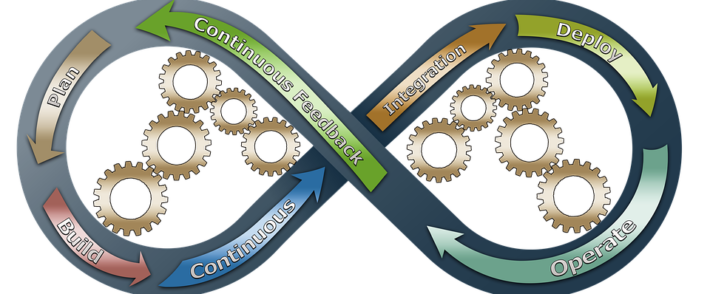Knowing how to create a continuous improvement culture in your business requires a combination of strategies, leadership commitment, and consistent effort. You do not get there overnight.
This article looks at what you need to do to get to this desired destination.
To Create a Continuous Improvement Culture Lead by Example
First things first. Do not expect to create an improvement culture if you are lukewarm to leading by example. You, the business owner, and your leadership team must demonstrate a genuine commitment to continuous improvement.

You must not only “talk the talk,” but also “walk the walk”!
When team members see their leaders actively seeking ways to improve and learn from mistakes, they are more likely to jump on the bandwagon.
Building a culture of continuous improvement is a long-term process and there will certainly be hiccups along the way.
Remain consistent and committed to the cause.
Set Clear Goals
Clearly define the goals of the team and the business. This a fundamental piece to continuous improvement.
These goals should be specific, measurable, achievable, relevant, and time-bound (SMART).
It is only from well-defined objectives that improvement initiatives can arise.
Set Your Teams Up For Success to Create a Continuous Improvement Culture
Empower Them
Empower team members to take ownership and accountability of their work processes and encourage them to suggest improvements.
Provide them with the necessary support and resources when you assign them the autonomy to make decisions that directly impact their work, while providing support and resources when needed.
Create Open Lines of Communication
Encourage open and honest communication among team members. Ensure everyone feels comfortable sharing their ideas, suggestions, and concerns and make it known that no-one will be shut down for doing so.
Conduct regular team meetings and feedback mechanisms to help create this environment.
Acknowledge Efforts
Frequently recognize and reward team members for their contributions to continuous improvement in various forms. This could be in the form of public appreciation, small incentives, or even opportunities for growth within the company.
Your appreciation goes a long way in building the much needed trust between leadership and employees.
Encourage Personal Development
A business that creates roadblocks to personal development is destined to crash. Encourage and support ongoing learning and skill development.
Wherever possible, provide resources, training, and opportunities for team members to expand their knowledge and skills. This will not only benefit their individual growth but also contribute to overall team improvement.
Encourage team members to try new approaches, technologies, or methodologies to solve problems and enhance efficiency especially where customer deadlines are not involved.
Regularly Collect Feedback From Various Sources
So, how do you find out how well you are doing? Revenue should not be the all-important statistic. Develop ways to collect feedback from customers / clients, team members, and your suppliers.
Regularly review this feedback and use it to identify areas for improvement that you can work upon.
Regularly Celebrate Business Progress and Achievements
Celebrate even small successes along the journey of improvement. What this does is that it provides a view into the vision and vision of the company.
This helps keep the momentum and reinforces the idea that improvement is a continuous effort as the company grows and matures..
Evaluate Your Systems and Processes

Regularly assess existing processes and workflows to identify bottlenecks, inefficiencies, and areas that can be streamlined or optimized.
Encourage team members to contribute ideas to improve the processes they use.
They are better positioned to see the changes that need to be made to improve these processes.
Establish Periodic Cycles for Improvement With Audits and Root Cause Analysis
Establish a cycle of setting improvement goals, implementing changes, gathering feedback, and then refining the changes based on that feedback.
Audits identify the superficial problems in your management systems, while a root cause analysis drills deep down to determine the real. cause.
The outcomes of audits and root cause analyses may introduce change to the business. Be willing to embrace this change and adapt to evolving circumstances.
A culture of continuous improvement requires the ability to adjust strategies and tactics as required. You must be ready for this.
Create a Continuous Improvement Culture with CI Champions
Identify and develop individuals within the team who are passionate about continuous improvement. These (CI)Continuous Improvement Champions can be your “eyes and ears’ and lead by example to help drive the culture among employees.
Document Lessons Learned
Encourage team members to document their experiences and lessons learned from improvement initiatives. This knowledge can be shared across the team and used as a reference for future initiatives.
Conclusion – How to Develop a Continuous improvement Culture
By integrating these strategies into your business, you can create a continuous improvement culture where continuous improvement becomes in-built like driving a car.
This results in a business that is not only efficient, but one that consistently provides quality products or services.
To get assistance with this exercise, CONTACT US TODAY.
Related Articles
- Why Root Cause Analysis Tools and Techniques are Important
- How to Implement an Effective Root Cause Analysis – Plan
- Why Root Cause Analysis is Important for Continuous Improvement
- Benefits of Integrating Root Cause Analysis and Quality Management
- How to Tackle Challenges in Root Cause Analysis – Common Ones
- How to Use Root Cause Analysis for Continuous Improvement
- How to Integrate Root Cause Analysis and Quality Without a QMS
- How to Reduce Risk in the Corrective Action Process
- Quality and Root Cause Analysis – How to Integrate Them
References
What is Root Cause Analysis (RCA)? ASQ https://asq.org › quality-resources › root-cause-analysis

